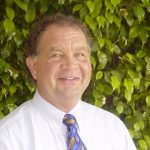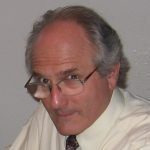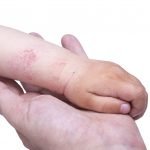The Vital Conversation
JAMES SENSENIG, ND
JARED L. ZEFF, ND, VNMI, LAC
This article joins a series of articles in NDNR that are based on transcripts of the Naturopathic Medicine Institute (NMI)’s Wednesday morning call-in program, The Vital Conversation. The program is hosted by senior vitalists to enhance the ability of naturopathic physicians to practice as vitalist naturopathic doctors. In this lightly edited transcript (by Emily Kane, ND), the second part of a 3-part conversation, Drs Sensenig and Zeff discuss how to “think like an ND.”
Dr Zeff: What would be the point of trying to establish and maintain a separate naturopathic profession – with separate licensure boards, separate legal parameters, separate continuing education, separate CNME, separate state associations, all the trouble that we’ve gone through to create a profession – if it’s simply a junior version of something that’s already there, ie, allopathic medicine? What’s the point of the time and money required to do that? Why even have separate schools?
Dr Sensenig: Good point. It is my impression that part of what is going on here is an implicit, and maybe explicit, understanding in the schools that the so-called “standard of care” is a far better way to treat, and that naturopathic doctors are somehow relegated to using older, outdated methods, because they “can’t do real medicine.” I think that many graduates come out of school thinking that the allopathic model is a higher standard. This is unfortunate, since those of us who have been practicing true naturopathy see every day that it’s the other way around.
Dr Broadwell always told us that a naturopathic physician is a physician who uses natural methods of treatment “by choice” because they are superior in their outcome to the use of medications that suppress symptoms.
Dr Zeff: I vigorously agree. This was supposed to be clear in the definition of naturopathic medicine that the AANP created in 1989, which states that naturopathic medicine is not defined by modalities; it’s defined by a philosophy. That philosophy includes concepts such as suppression and the difficulties that come from suppression. Our philosophy also includes working with the natural healing tendency of the body – a different way of thinking – which, of course, leads us to different therapeutic approaches to the patient. Ours is not an inferior approach, nor an inferior standard of care; it’s based on different philosophical tenets. Our approach is in many ways superior, because when you practice true naturopathic medicine, you end up with a healthier patient, not a drugged patient.
A Child with Asthma
Dr Sensenig: I had a patient in here yesterday, and I found myself saying something that I often say. I’ll recommend something and then point out, particularly with a new patient, that there’s no downside with my suggested protocol; the only side effect of my treatment is better health. So, if we don’t happen to hit the nail exactly on the head, the worst thing that could happen is that you’re going to feel better. This is because the patient will get better.
Kent makes the distinction between the patient getting better and the disease declining, versus – in allopathic medicine – the disease getting the upper hand and the patient being in decline.
Okay, back to the child with asthma… could you please tell us what you did with this child?
Dr Zeff: I love it when moms bring me little kids with asthma, because I’m reasonably certain that within a couple of months they’re not going to have asthma anymore. They’re not going to be carrying around inhalers and be worried about the next trip to the ER, because they actually will no longer have asthma.
The question isn’t, “How do you treat asthma?” The question should be, “Why are you sick?” You shouldn’t be sick; your body knows how to be well. There is the Vis Medicatrix Naturae working within you, so how come you’re sick? We need to find out why you have asthma, because you shouldn’t have asthma.
Basically, what we’re looking at is an inflammatory condition in the small airways of the lungs. What’s causing the inflammation? There are 2 basic considerations: 1) There is the internal toxicity that Lindlahr talks about needing to get cleaned out; and 2) then there are the potential external triggers. Those triggers are there for everybody. So, how come this kid is getting the asthma? Because his lungs have a degree of inflammatory load, a toxic load that creates this inflammatory under-pinning, so when a trigger hits, the inflammation gets even greater, and that produces the asthmatic attack. What you need to do is look at what is going on with the child.
I have a simple algorithm I use in these kinds of cases. Basically, it’s to get the diet right so that you lower the burden of toxemia. The purpose of the dietary change is to enhance digestion and reduce toxemia. Why? Because toxemia is the underlying creator of inflammatory problems.
I have a certain way to do that; other naturopathic doctors have different ways. That’s not really the critical point. The critical point is that you’ve got to lower the toxicity so that the inflammatory load goes down. Often, I use a homeopathic remedy. There are usually 3 or 4 that I choose from for acute events. And I use a botanical lung tonic to improve the overall health of the lung in the short term while we’re reducing the inflammatory load to the blood, which is called toxemia. So, in brief, I help the patient:
- Make dietary changes
- Engage in a few days of hydrotherapy
- Take a remedy that I have on hand in my office to ease the patient’s breathing. This remedy is almost always going to be Arsenicum, Antimonium tartrate, or Kali bic, but possibly 1 or 2 others.
I give the selected homeopathic remedy to the child right in the office. We can see and hear right away if the child is breathing better. You listen to a deep breath they take, and you can see that they’re breathing more easily.
The mom leaves with that same remedy in a 200C potency, for the child to take during acute events. And also a 6C potency, to take 3 or 4 times a day to slowly reduce the irritability in the lungs, while simultaneously reducing the cause of the asthma through the dietary changes and hydrotherapy. I also give them a botanical lung tonic to soothe the lung tissues while they’re going through this process.
It’s very simple. It’s very easy. It works very well. And it’s nontoxic!
Consequences of Suppression
Dr Sensenig: It’s so simple… I can’t figure out why not everybody gets it, especially medical doctors. But, they have a different way of thinking. Dr Zeff, you talked about several different remedies; you talked about hydrotherapy; you talked about changing the diet. That’s basic naturopathy. That same “protocol” works for everything we do, because we’re treating the patient, not the condition.
There are some nuances here. Of course, you have to be careful, particularly with a child who is in an acute situation. But, because of the way we look at things, you can also notice that there are certain patterns or conditions that are going on for that child. For example, we’re discussing inflammation in the lungs, but the inflammation probably didn’t start in the lungs. It seems like more often than not, a child who ends up being diagnosed with asthma is a child who had some other manifestation of that allergic phenomenon earlier on in their life. For example, they are often born with “eczema” or some other kind of inflammatory phenomenon, which has been ignored or suppressed by conventional medicine.
Dr Zeff: About 4 or 5 years ago, a woman brought me a little child – about a year-and-a-half old – who had eczema. The conventional doctor had given the mom a little tube of cortisone cream and an inhaler, and had said, “I know the kid doesn’t have asthma, but this is what we usually see. These kids start out with eczema, we give them the cortisone, and then they develop asthma. Just keep this handy, because you’re probably going to need it.”
What the doctor didn’t “get” is what a basic, first-year naturopathic doctor understands: when you suppress the externalization of the toxicity back into the system with the cortisone, you’re driving it into the lungs. That’s what causes the asthma. You treat the lungs properly, and the eczema will reoccur. But the goal isn’t to suppress the eczema; it’s to remedy the underlying cause, which is usually a proinflammatory dietary factor. As the patient improves her diet, her lungs get better, her skin may flare, but then the skin gets better, and the kid is cured.
If you don’t understand the concept of suppression, you’re going to chase your tail and never get a cure.
Dr Sensenig: Let’s go back to the medical doctor you just described who gave the patient the hydrocortisone and the inhaler, because he understood that the kid’s eczema is more likely than not going to progress to asthma. The MD did not understand the “why” of it. He doesn’t have our model. He doesn’t have our world view. He doesn’t have the paradigm to understand suppression or toxemia.
The doctor was observant enough to know that a common sequela of eczema is asthma, but without any way to get his head around a model beyond the materialistic, reductionistic, flat-earth model of conventional medicine. This is a very common dilemma, because you can’t see something if you don’t know that that something is possible.
This column, based on the Vital Conversations of the Naturopathic Medicine Institute, will continue in next month’s NDNR.

James Sensenig, ND, was a 1978 graduate of NCNM in Portland, OR. For over 40 years he maintained an eclectic practice in Hamden, CT. Over the years, Dr Sensenig held prominent positions in the various naturopathic colleges and the AANP. A champion of classical naturopathic medicine, Dr Sensenig received an Honorary Doctor of Naturopathic Philosophy degree from CCNM, and received numerous awards for his dedication to teaching the principles of naturopathic medicine. We invite you to participate in the Naturopathic Medical Institute (NMI) Vital Conversations, our annual Vital Gathering conferences, and many other resources found at our website: www.naturopathicmedicineinstitute.org.

Jared L. Zeff, ND, VNMI, LAc, is a licensed doctor of naturopathic medicine and a licensed acupuncturist. In addition to functioning as Medical Director at the Salmon Creek Naturopathic Clinic in Vancouver, WA, Dr Zeff teaches on the faculty at National University of Natural Medicine in Portland, OR, where he was also Dean from 1988 to 1993, and holds a professorship in Naturopathic Medicine. Dr Zeff is a graduate of the University of California, NCNM, and the Emperor’s College of Traditional Oriental Medicine. He, along with Pamela Snider, is the author of the AANP’s Definition of Naturopathic Medicine, and the Therapeutic Order concept.





